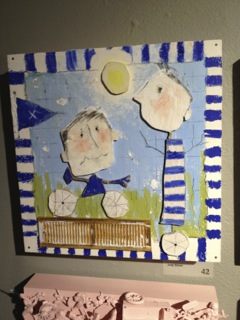 I thought I’d blog about a topic that we don’t talk about very much but is part of our experience as speech pathologists. Most of the time we move into a place with our clients where there is a nice balance of communication and things are “humming” so to speak. Certainly we have periods of time that are more challenging as kids might be more difficult behavior-wise or we need to change up our materials to engage a child that is growing and might need to play with teenage ninja turtles, rather than Fisher Price little people to interest him.
I thought I’d blog about a topic that we don’t talk about very much but is part of our experience as speech pathologists. Most of the time we move into a place with our clients where there is a nice balance of communication and things are “humming” so to speak. Certainly we have periods of time that are more challenging as kids might be more difficult behavior-wise or we need to change up our materials to engage a child that is growing and might need to play with teenage ninja turtles, rather than Fisher Price little people to interest him.
But what about the rare but realistic times when the client-therapist relationship just doesn’t jive. I work with kids so can only speak from that perspective but it makes sense that once in a while personalities just don’t click. Or maybe the delivery model just isn’t the best for a child to progress at the best pace. Working in homes, in a child’s natural environment works really well for me since parents can easily observe my techniques and their child’s progress, as well as carry out appropriate activities throughout the week until I come again. Kids are usually very relaxed in their natural environment and more verbal, especially if I ask to have a tour of their playroom. As good as that model is, especially for preschool therapy, there have been a few times when a child just couldn’t leave his free form play place (home) and stay engaged in a therapy session. On those occasions I recommended to the parents that they pursue therapy at a clinic or office, not their home.
On the flip side, parents have come to me over the years, disenchanted with their present therapy situation. Some of the complaints have been: a clinic run by an experienced therapist but weekly sessions conducted by therapists with little experience, little communication, inability to observe sessions, and lack of progress. I make it a practice not to criticize other therapists because I would like to receive the same grace so I simply move forward, addressing the needs of that child.
It’s best for all parties involved to be honest about what works and what doesn’t and move ahead.



